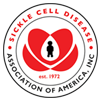Trusted Resources: Evidence & Education
Scientific literature and patient education texts
Hydroxycarbamide treatment and brain MRI/MRA findings in children with sickle cell anaemia
source: British Journal of Haematology
year: 2016
authors: Nottage KA, Ware RE, Aygun B, Smeltzer M, Kang G, Moen J, Wang WC, Hankins JS, Helton KJ
summary/abstract:Silent cerebral infarction (SCI) is the most common neurological abnormality among children with sickle cell anaemia (SCA). The effect of hydroxycarbamide (also termed hydroxyurea) on the development and progression of SCI is unclear. We evaluated brain magnetic resonance imaging/angiography (MRI/MRA) in children with SCA receiving long-term hydroxycarbamide therapy. Fifty participants (median 9·4 years, range 1·1-17·3) enrolled in the Hydroxyurea Study of Long-Term Effects (HUSTLE; NCT00305175) underwent brain MRI/MRA and laboratory evaluations before hydroxycarbamide initiation and after 3 and 6 years of treatment to maximum tolerated dose. SCI and vascular stenosis were evaluated. At baseline, 3 and 6 years, SCI were present in 19/50 (38%), 20/49 (41%), and 7/17 (41%), respectively. At 3 years, one child developed a SCI lesion, and another progressed (single lesion to multiple). Lower haemoglobin (Hb) (80 g/l vs. 86 g/l, P = 0·049), fetal Hb (5·0% vs. 10·4%, P < 0·001) and oxygen saturation (97% vs. 98%, P = 0·027) before hydroxycarbamide initiation were associated with SCI. No patients had vascular stenosis identified on MRA, transient ischaemic attack or stroke. Our data indicate that children receiving hydroxycarbamide over a 3- to 6-year period have a low rate of new or worsening cerebrovascular disease. Further studies are needed to confirm that hydroxycarbamide can prevent the onset and progression of SCI.
organization: St. Jude Children's Research Hospital, Memphis, USA; Cincinnati Children's Hospital Medical Center; Steven and Alexandra Cohen Children's Medical Center of New York; University of MemphisDOI: 10.1111/bjh.14235
read more full text
Related Content
-
Strategies to build trust and recruit African American and Latino community residents for health research: a cohort ...Background: This study used Community P...
-
Sickle Cell Treatment Endari Now Available in the United StatesEmmaus Life Sciences has announced that ...
-
FDA Approves Novel Treatment to Target Abnormality in Sickle Cell DiseaseToday, the U.S. Food and Drug Administra...
-
Multidisciplinary Care Team Greatly Reduces Risk in Pregnant SCD Patients in Low-income CountriesAccording to a study published in the Am...
-
Today’s Faces of Sickle Cell Disease: Deidra Flowers-WilliamsAt six months of age, Deidra Flowers-Wil...
-
Review Board Finds Global Blood’s Sickle Cell Disease Therapy Voxelotor Is SafeAn independent review board has found Gl...
-
American Society of Hematology 2020 Guidelines for Sickle Cell Disease: Management of Acute and Chronic PainObjective: These evidence-based guideli...
To improve your experience on this site, we use cookies. This includes cookies essential for the basic functioning of our website, cookies for analytics purposes, and cookies enabling us to personalize site content. By clicking on 'Accept' or any content on this site, you agree that cookies can be placed. You may adjust your browser's cookie settings to suit your preferences. More Information
The cookie settings on this website are set to "allow cookies" to give you the best browsing experience possible. If you continue to use this website without changing your cookie settings or you click "Accept" below then you are consenting to this.




 +myBinder
+myBinder
